When getting new tires, you’ll have to pay for the installation service (called mounting and balancing) on top of the tires themselves. But don’t panic.
The mounting and balancing fee is far from exorbitant, and it’s a key factor to on-the-road safety. We’ll break down the cost, and the reason for it, below.
The fee can vary, all depending on various factors like tire size, your location, and the shop you chose.
The average cost ranges from $15 to $60 per tire if you’re getting them mounted and balanced. If you’re only mounting tires, it can range from $6 to $24 per tire.
Mounting is exactly as it sounds. It’s the act of putting your tires onto wheels, then installing those wheels onto your car’s axles.
Balancing gets a little more scientific. A wheel is considered balanced when its center of gravity is exactly like the axis of rotation. Essentially, when the wheel and tire mass are evenly distributed, the tires don’t vibrate when spinning.
To visualize what we mean, think of your washer on its spin cycle. If the clothes are all sticking evenly to the walls, your machine is as quiet as a mouse. But when the weight is unbalanced, it shakes and hums. That may be fine (albeit annoying) with a washing machine, but with your car? Not so much.
Picture that violent, unbalanced spin cycle again. Now think about your car acting that way on the road — yikes!
Mounting and balancing go hand-in-hand because you want your wheels spinning smoothly, especially at high speeds. If your tires are unbalanced, you’ll have a shaky ride. That may not sound too bad, but your vehicle is suffering from those vibrations. And if they remain unbalanced, you’re putting yourself and others at risk on the road.
The cost will vary depending on the area. Sometimes, even locations a few miles apart can have wildly different costs.
Sometimes, even locations a few miles apart can have wildly different costs.
If you’re just looking to mount tires, the cost ranges between $6-$24 per tire at major companies like Walmart or Sears. A locally-owned auto shop may cost more, but for something as important as tires, a little extra can go a long way.
If you’d like your tires mounted and balanced, the cost falls between $15 and $60. Balancing is a key factor in driver safety, and it helps extend the life of your new wheels.
The biggest factor in determining cost would be the overall size of the tire. How size is measured depends from shop to shop. Some gauge size by diameter, while others consider the aspect ratio.
Vehicle type may also affect the cost of this service. The average will differ between smaller cars, trucks, and SUVs. Smaller cars hang in the $13-$20 range, while larger ones can get between $30-$45. When you consider larger cars mean larger tires, this makes perfect sense.
When you consider larger cars mean larger tires, this makes perfect sense.
A shop’s location will also affect cost. Getting your tires mounted and balanced in New York City can sometimes get up to $40 a tire, while less populated areas range from $15-$20.
It’s important to perform due diligence and check out a good handful of auto shops in your area.
You can save money by calling around. Different auto shops will offer different pricing.
Pro-tip: Find one that offers the most cost-effective deal, not the cheapest. Cheap tires and associated services may cost you more in the long run as they can require more maintenance and earlier replacement.
It’s certainly possible, but unless you’re a professional with the right equipment, leave it to the experts at the auto shop. Without the proper tools and know-how, mounting tires solo can lead to disaster.
Absolutely! Keep yourself safe on the road by getting your tires balanced now and again. Maintenance is crucial to your safety and the longevity of your tires.
Manufacturers recommend balancing your tires every 3,000 to 6,000 miles. If you’ve encountered any rough terrain lately, you may want to do it sooner.
Tires themselves may be expensive, but installing them will only run you a few extra bucks. Source local auto shops to ensure you get the best bang for your buck.
Did you find this piece helpful? Then consider checking:
How To Take Tire Off Rim
How To Dismount A Tire
How To Use Tire Machine
How To Mount ATV Tires
How To Stretch A Tire
How To Take A Tire Off A Rim Without A Machine
Is your car in need of new tires right now? You could be looking at paying anywhere from $50 to $200 on average for the tires themselves. You might also have to spring for more expensive tires if you happen to have an SUV, with those tires often costing somewhere between $60 and $350 each. But regardless of what kind of tires you buy, the costs won’t end there. There is also going to be a cost to mount and balance tires that you’ll have to keep in mind.
You might also have to spring for more expensive tires if you happen to have an SUV, with those tires often costing somewhere between $60 and $350 each. But regardless of what kind of tires you buy, the costs won’t end there. There is also going to be a cost to mount and balance tires that you’ll have to keep in mind.
Auto Repairs Are EXPENSIVE
So, what is the cost to mount and balance tires? And what does it mean to mount and balance tires anyway? Those are some of the questions that we’re going to set out to answer today. It’ll help you understand exactly what you’re paying for the next time you need to invest in new tires. Learn all about mounting and balancing tires and the cost to mount and balance tires below.
What Does It Mean to Mount Your Tires?Before we begin discussing the cost to mount and balance tires, you really need to know what it means to both mount and balance your tires. It’ll help you get a much better understanding of what you’re paying for when you have your tires mounted and balanced.
Since mounting your tires and balancing them are two very different things, we’re going to break the two up here. We’ll begin by talking about what it means to mount your tires. It’s actually pretty easy to understand how mounting tires works, especially when you compare it to the complications involved with balancing tires.
When a technician mounts your tires for you, it essentially means that they take them and put them onto your car for you. They do this by taking tires and putting them onto your wheels before installing the wheels onto your car’s axles. It’s a fairly quick and easy process that plays out over the course of just a few minutes.
There are, however, a few ways in which a technician can mount your car’s tires, and you should be familiar with each of them. They might choose to do it by:
The cost to mount and balance tires might depend on which of these three methods that a technician uses. You could end up paying a little extra for someone to mount your tires by hand since it can take more time and require more precision overall on the part of the technician.
You could end up paying a little extra for someone to mount your tires by hand since it can take more time and require more precision overall on the part of the technician.
Now that you know what it means to mount tires, let’s move on and talk about what it means to balance them. As we alluded to a moment ago, balancing your tires is usually a little more complicated and challenging than mounting them, which is why it accounts for most of the cost to mount and balance tires.
We’re going to explain exactly how the tire balancing process plays out in a couple of minutes. But for now, all you need to know is that balancing your car’s tires involves taking them and making sure that the center of gravity is the same as the axis of the rotator on each tire. Or to put it another way, balancing your tires means to make sure that the mass of your tire is distributed evenly all the way around so there isn’t more pressure being applied to certain parts of your tire as opposed to others.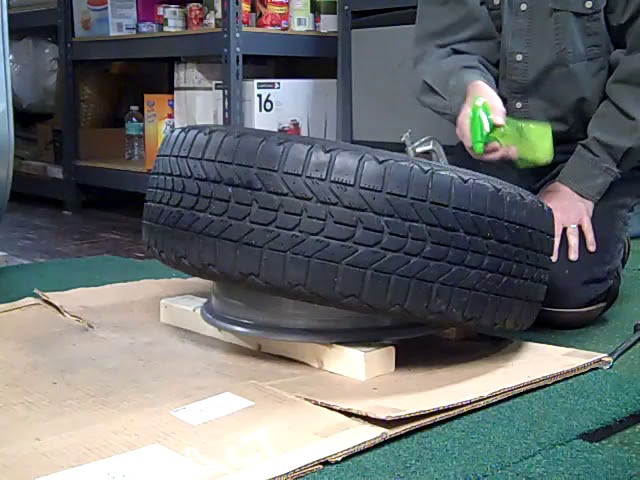
A technician will work to balance the tires on your car when they’re first installed by adding weights to them. These weights are put into place so that your tires all weigh the same amount all the way around. It’s very important for tires to be balanced because, if they’re not, it’ll often cause them to wear down way quicker than they would otherwise. It makes the cost to mount and balance tires well worth it in the end.
How Does Tire Balancing Work?You should now have a much better idea of what it means to balance your car’s tires and why it’s so important to do it. But you might still be asking yourself, “How does tire balancing work?” It’s a good question, and it’s something that we’re going to answer for you right now.
There are actually a couple of different ways in which a technician can do tire balancing after mounting new tires to your car. Continue reading to find out about the two main methods that a technician might use while balancing your tires.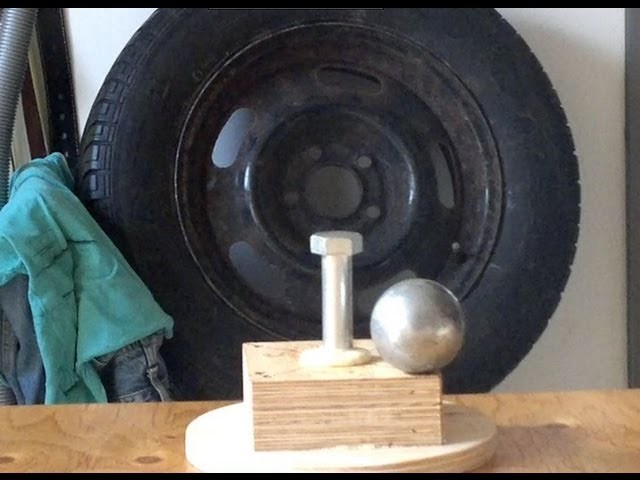 The method that they use could have a big impact on your cost to mount and balance tires.
The method that they use could have a big impact on your cost to mount and balance tires.
Spin balancing is probably the most popular method among technicians who are routinely asked to balance the tires on cars. When using the spin balance method, a technician will utilize a special piece of equipment that is designed to analyze the tires on a car to figure out whether or not they’re balanced. Here are the steps they’ll take while using this equipment:
Spin balancing is a very effective way to balance the tires on a car. It’ll point out any potential problems as far as imbalances are concerned and allow a technician to make the necessary adjustments to a tire to balance it out. The machine that is used also makes everything pretty easy, which helps keep the cost to mount and balance tires to a minimum.
It’ll point out any potential problems as far as imbalances are concerned and allow a technician to make the necessary adjustments to a tire to balance it out. The machine that is used also makes everything pretty easy, which helps keep the cost to mount and balance tires to a minimum.
Spin balancing is, as we just mentioned, very easy to do and very effective when it comes to balancing the tires on a car. But one thing that it doesn’t take into account is the effect that the road could have on your car’s tires. The road could very well cause your tires to be imbalanced if you’re not careful.
This is where a method called road force balancing comes in. While your car’s tires are spinning, a technician can use what’s called a “road force balancer” to push a large roller up against them. This roller will simulate what will happen when your car’s tires come into contact with the road, and they can reveal any imbalances that might show up as a result of it.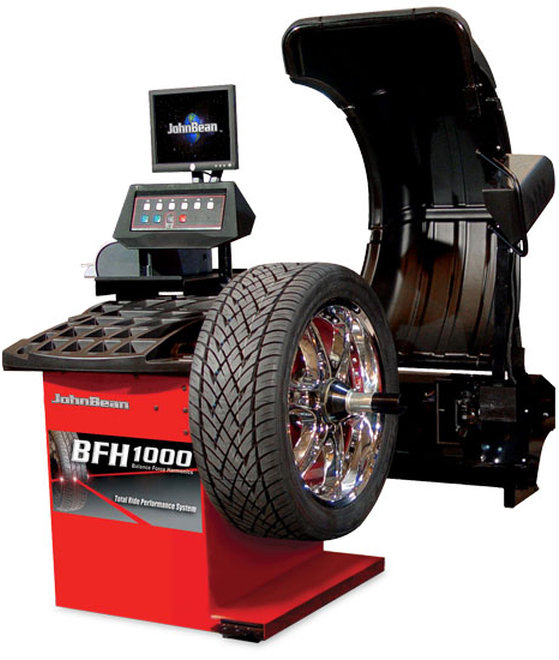
Road force balancing will often uncover some balancing issues that might not show up during spin balancing. They can help a technician to balance your car’s tires even further and prevent them from facing issues once you take your new tires out on the road. The road force balancing process might add to the cost to mount and balance tires, but it’s a necessary part of the balancing process.
What Might Happen If You Don’t Balance Your Tires?Technically, you could just toss new tires onto your car and be on your way after purchasing. There is no rule that says you have to mount and balance them. You might be tempted to work your way around the cost to mount and balance tires by not having your tires balanced. But this would be a bad idea.
There are all kinds of bad things that could happen to your car if you don’t have your tires mounted and balanced in the right way. Find out about a few of the things that might happen to your car if you don’t take mounting and balancing tires seriously:
Bottom line: It makes all the sense in the world to bite the bullet and pay the cost to mount and balance tires.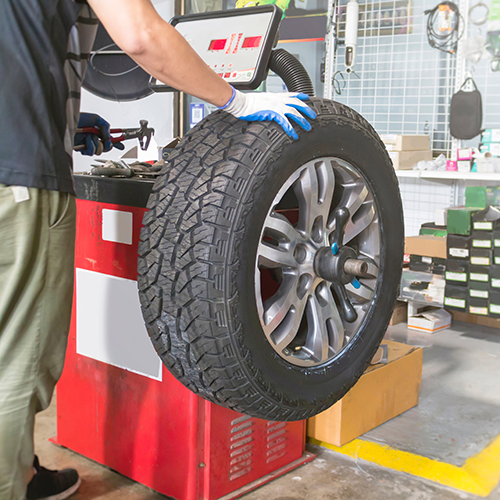 You’re almost certainly going to regret it later on if you don’t mount and balance your tires properly.
You’re almost certainly going to regret it later on if you don’t mount and balance your tires properly.
The good news for those who might be concerned about the cost to mount and balance tires is that it’s not going to set you back too much money at all. It’s a very minor cost when you consider just how important it is to mount and balance tires correctly.
The exact price that you’re going to have to pay to mount and balance tires will often depend on what kind of car you drive and what size your tires are. But on average, you’re going to be looking at paying between $13 and $45 per tire as the cost to mount and balance tires. That’s a very small price to pay in the grand scheme of things.
You might have to pay a little more than that if you have very large tires. But most people aren’t going to have to dip too far into their bank accounts to come up with the cash to pay for tire mounting and balancing.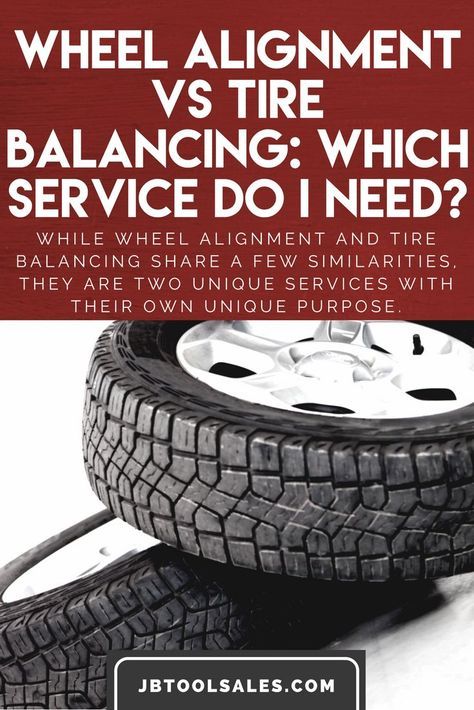
You’re going to want to have your car’s tires mounted and balanced when you first buy them. But that shouldn’t be the last time that you have your car’s tires mounted and balanced. You’re also going to want to get into the habit of doing it about once every two years to ensure that your tires stay balanced. While this will often run you between $25 and $35 per tire, it’ll be worth every penny.
You should flip through the owner’s manual for your car to see what your specific auto manufacturer recommends when it comes to tire rotations and tire balancing. They should spell out exactly how often you should have your tires rotated and balanced to keep them in tip-top condition.
Where Can You Have Tires Mounted and Balanced?Most car dealerships and auto repair shops can set you up with tire mounting and tire balancing services when you need them. But if you want to minimize the cost to mount and balance tires, you should drive your car down to a tire specialty shop anytime you need to have any work done on your tires or wheels.
The technicians at these kinds of shops will have easy access to the machines that are used to balance tires. This means that they usually won’t charge you as much as car dealerships and auto repair shops to balance your tires. You might be able to cut your cost to mount and balance tires down dramatically by calling on them for help.
Should You Ever Mount and Balance Tires Yourself?Mounting and balancing tires is not a job that you’re going to be able to tackle yourself in most cases. Unless you’re a car buff with access to a machine that can help you balance your tires, it’s going to be a job that you should leave up to the professionals. They’ll have the necessary equipment to pull off tire balancing.
It’s not worth you trying to mount and balance your tires on your own to save a few bucks. You’ll be way better off paying the cost to mount and balance tires so that you know the job gets done right. You won’t have to worry about your tires being imbalanced at any point when you take this approach.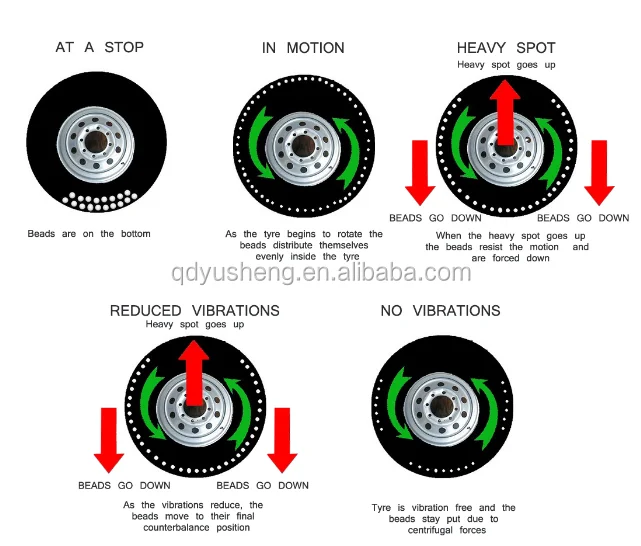
Is it time to switch from winter to summer tires? Come to our car service to change tires by prior online appointment.
Shesteryonka car services are equipped with modern Italian balancing equipment RAVAGLIOLIM and a tire changer CORCHI , which allows tire fitting for wheels ranging in size from 12 "to 30", including low-profile tires and Run Flat tires. nine0004
In addition to tire fitting and wheel balancing, you will receive high-quality services for all types of repairs, including puncture and side cut repair, as well as washing and cleaning wheels. Service centers "Shesterenka" have the status of certified services that have the right to perform tire fitting and wheel balancing.
| Name of work | Cost of work | |||||||
| R12-14 | R15 | R16 | R17-18 | R19+ comm.  transport | ||||
| light | implemented | easy | implemented | easy | off-road | |||
| Wheel - remove/attach | 90 | 100 | 120 | 110 | 150 | 140 | 170 | 170 |
| Wheel - balancing | 90 | 100 | 120 | 110 | 150 | 140 | 170 | 170 |
| Wheel assembly | 80 | 90 | 100 | 90 | 130 | 120 | nine0048 130150 | |
| Wheel - removal | 80 | 90 | 100 | 90 | 130 | 120 | 130 | 150 |
| Wash wheel | 50 | 50 | 50 | 50 | 70 | 70 | 70 | 70 | nine0032
| Wheel - inflation | 25 | 25 | 25 | 25 | 25 | 25 | 25 | 25 |
| Chamber - repair | 50 | 50 | 50 | 50 | 50 | - | - | - |
One wheel conversion (excl.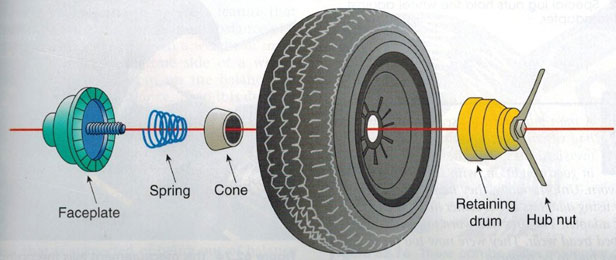 freight cost) freight cost) | 340 | 380 | 440 | 400 | 560 | 520 | 600 | 640 |
| 4 / 6 wheel conversion (without cost of freight) | 1360 | 1520 | 1760 | 1600 | 2240 | 2080 | 2400 | 2560/3840 |
| Tire - repair (harness installation) | 150 | 150 | 150 | 150 | 150 | 150 | 150 | 150 |
| Tire - repair (mushroom installation) | 150 | 150 | 150 | 150 | 150 | 150 | 150 | 150 |
| Tire - repair (installation of cord patch) | 250 | 250 | 250 | 250 | 250 | 250 | 250 | 250 |
| Tire - repair (side cut up to 3 cm) | 250 | 250 | 250 | 250 | 250 | 300 | 300 | 300 |
| Seat - cleaning | 25 | 25 | 25 | 25 | 25 | 50 | 50 | 50 |
| Seat - sealing | 40 | 40 | 40 | 40 | 40 | 60 | 60 | 60 |
| Disc check (balance) | 50 | 50 | 50 | 50 | 50 | 50 | 50 | 50 |
| Copper grease treatment of the hub (1 wheel) | 50 | 50 | 50 | 50 | 50 | 50 | 50 | 50 |
| Installing a non-return valve | 25 | 25 | 25 | 25 | 25 | 25 | 25 | 25 |
| Pressure sensor installation | 200 | 200 | 200 | 200 | 200 | 200 | 200 | 200 |
Please note that the price is indicated in rubles and is valid at the time of publication.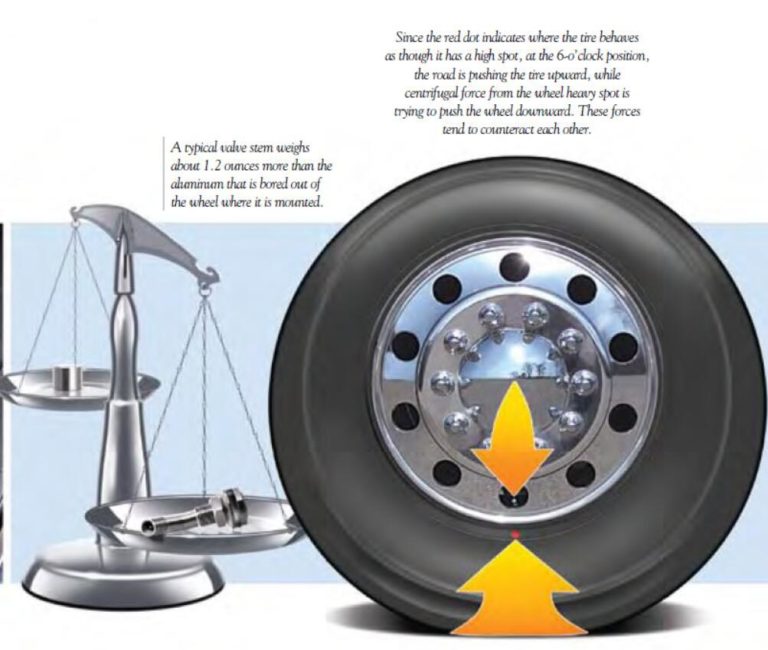 You can get more complete information by contacting the managers of the Shesteryonka service centers. nine0005
You can get more complete information by contacting the managers of the Shesteryonka service centers. nine0005
Certificates of Shesterenka service centers
Copyright © 2006 — 2023 "Gear"
Privacy policy
All rights reserved.
All logos and trademarks displayed on the site are the property of their respective owners.
| Designation | R13 | R14 | R15 | R16 | R17 | R18 | R19 | R20 | R20+ |
|---|---|---|---|---|---|---|---|---|---|
| Price for 1 wheel | 300 | 350 | 400 | 425 | 475 | 550 | 650 | 700 | 800 |
| Price for 4 wheels | 1200 | nine0048 14001600 | 1700 | 1900 | 2200 | 2600 | 2800 | 3200 | |
| Removal / installation | 100 | 100 | 100 | 100 | 125 | 150 | 150 | 180 | 180 |
| Tire service | 80 | 100 | 120 | 140 | 150 | 180 | 260 | 250 | 300 |
| Balancing | 120 | 150 | 180 | 190 | 200 | 220 | 260 | 250 | 300 |
